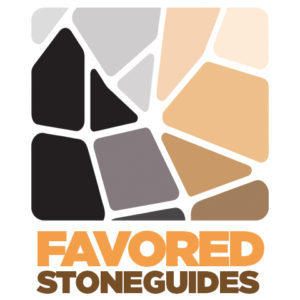If you want to bring a unique and sophisticated touch to your walls, the geometric line finish is one of the best techniques you can use.
It blends modern minimalism with artisan texture, making it an excellent choice for commercial spaces, restaurants, and feature walls at home.
This guide will walk you step-by-step through how to create a geometric line concrete finish, using clean techniques and professional methods that ensure a strong, polished result.
What is a Geometric Line Finish?
A geometric line finish uses sharp, clean lines embedded into the surface of plaster to create modern designs. It’s all about creating something a little different and unique—perfect for consumers who want to stand out without overwhelming their space.
You can achieve this effect with:
- Concrete plaster products
- Marmarino Fine
- Marmarino Medium
- Grassello and other Venetian plasters
The technique suits many types of materials, giving them extra depth and character.
What You’ll Need
Before starting, make sure you have the following tools and materials ready:
- Concrete plaster (pre-mixed)
- Stainless steel trowel (around 200mm x 80mm)
- Spatula or mixing tool
- Masking tape (use medium to high tack, not low tack)
- Natural beeswax
- Pinello brush
- Polishing cloth
- Sponge
- Clean water bucket
- Laser level (optional, but very helpful for larger walls)
Make sure your sample board or wall is clean, dust-free, and properly prepped before beginning.
Step 1: Apply the Concrete Base Coat
Start by applying your base coat of concrete plaster:
- Load the material onto the outside edge of your trowel.
- Use random, flowing motions to lay the plaster. Concrete looks best when it’s not too uniform.
- Always work from dry into wet sections to keep a smooth application.
- Cover the entire surface, ensuring no bare spots remain.
Pro Tip: Use all parts of the trowel—including corners and edges—to reach awkward areas and create a natural, organic look.
Once your base coat is complete, clean your tools and let it dry overnight. This ensures a strong foundation for the next steps.
Step 2: Plan and Apply the Geometric Masking
With the base dry, it’s time to lay down your geometric design:
- Use medium-to-high tack masking tape to avoid bleed-through.
- If you have access to a laser level, use it to make sure your lines are perfectly straight.
- Plan your design first. Simple intersections, right angles, and diagonal patterns work best for beginners.
- Apply the masking tape carefully, pressing it down firmly to avoid gaps.
You can get as creative as you like—this is your chance to define the final look!
Step 3: Apply the Top Coat of Concrete
Now it’s time to apply the top coat:
- Apply concrete plaster carefully over the entire surface, working around the taped lines.
- Hold the trowel at a shallow angle with light pressure to avoid pushing plaster under the tape.
- Be especially gentle near the tape edges to prevent shifting or damaging your design.
If you want to add extra texture, use a regardé trowel or lightly scratch the surface once it has firmed up slightly.
Pro Tip: Do not trowel over freshly scratched areas immediately. Allow them to dry slightly first to preserve the texture.
Step 4: Remove the Masking Tape
Timing is crucial when removing the tape:
- Wait 10–20 minutes after applying the top coat—long enough for the plaster to firm but not fully harden.
- Gently peel the masking tape away, working in the reverse order you applied it.
- Be careful to avoid damaging the edges of your fresh plaster.
After removing the tape, you’ll see your geometric pattern perfectly revealed, crisp against the textured concrete.
Step 5: Allow to Fully Dry
After the tape is removed:
- Allow the entire surface to dry overnight.
- Make sure there is good air circulation in the space to speed up drying and avoid trapping moisture under the finish.
This sets the stage for final sealing and protection.
Step 6: Wax and Protect the Finish
Once completely dry, it’s time to seal the finish with natural beeswax:
- Shake the wax container thoroughly.
- Using a sponge, apply a thin, even coat of wax across the surface.
- Focus extra attention on the geometric lines to ensure complete protection.
- After a few minutes, buff the surface with a polishing cloth in circular motions.
- Wait 12 hours, then apply a second coat for maximum durability.
Why Wax? Wax fills the microscopic pores in the plaster, creating a moisture-resistant barrier. It protects the wall from grease, moisture, and staining—essential for long-term beauty.
Final Thoughts
Creating a geometric line concrete finish is a fantastic way to elevate a wall from ordinary to extraordinary.
Although it requires patience and attention to detail, the result is a truly professional-looking, bespoke piece of wall art.
Here’s a quick recap:
| Step | Action |
|---|---|
| 1 | Apply base coat of concrete |
| 2 | Plan and apply masking tape design |
| 3 | Apply top coat carefully |
| 4 | Remove tape once plaster firms |
| 5 | Allow to dry overnight |
| 6 | Wax and buff (two coats recommended) |
If you follow these steps carefully, you’ll create a finish that wows every time. Whether you’re designing a restaurant feature wall, a corporate space, or a bold home statement, this technique delivers impact and elegance.
And remember—practice makes perfect. Each board you complete will build your skill and your eye for beautiful, textured finishes.

